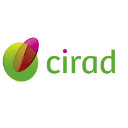Effector diversification within compartments of the Leptosphaeria maculans genome affected by Repeat-Induced Point mutations.
| Titre | Effector diversification within compartments of the Leptosphaeria maculans genome affected by Repeat-Induced Point mutations. |
| Publication Type | Journal Article |
| Year of Publication | 2011 |
| Authors | Rouxel, Thierry, Grandaubert Jonathan, Hane James K., Hoede Claire, van de Wouw Angela P., Couloux Arnaud, Dominguez Victoria, Anthouard Véronique, Bally Pascal, Bourras Salim, Cozijnsen Anton J., Ciuffetti Lynda M., Degrave Alexandre, Dilmaghani Azita, Duret Laurent, Fudal Isabelle, Goodwin Stephen B., Gout Lilian, Glaser Nicolas, Linglin Juliette, Kema Gert H. J., Lapalu Nicolas, Lawrence Christopher B., May Kim, Meyer Michel, Ollivier Bénédicte, Poulain Julie, Schoch Conrad L., Simon Adeline, Spatafora Joseph W., Stachowiak Anna, Turgeon Gillian B., Tyler Brett M., Vincent Delphine, Weissenbach Jean, Amselem Joëlle, Quesneville Hadi, Oliver Richard P., Wincker Patrick, Balesdent Marie-Hélène, and Howlett Barbara J. |
| Journal | Nature communications |
| Volume | 2 |
| Pagination | 202 |
| Date Published | 2011 |
| ISSN | 2041-1723 |
| Mots-clés | Ascomycota, Base Composition, Base Sequence, Computational Biology, DNA Transposable Elements, Genetic Variation, Genome, Fungal, Molecular Sequence Annotation, Molecular Sequence Data, Phylogeny, Point Mutation, Sequence Analysis, DNA, Transcription Factors |
| Abstract | Fungi are of primary ecological, biotechnological and economic importance. Many fundamental biological processes that are shared by animals and fungi are studied in fungi due to their experimental tractability. Many fungi are pathogens or mutualists and are model systems to analyse effector genes and their mechanisms of diversification. In this study, we report the genome sequence of the phytopathogenic ascomycete Leptosphaeria maculans and characterize its repertoire of protein effectors. The L. maculans genome has an unusual bipartite structure with alternating distinct guanine and cytosine-equilibrated and adenine and thymine (AT)-rich blocks of homogenous nucleotide composition. The AT-rich blocks comprise one-third of the genome and contain effector genes and families of transposable elements, both of which are affected by repeat-induced point mutation, a fungal-specific genome defence mechanism. This genomic environment for effectors promotes rapid sequence diversification and underpins the evolutionary potential of the fungus to adapt rapidly to novel host-derived constraints. |
| DOI | 10.1038/ncomms1189 |
| Alternate Journal | Nat Commun |



